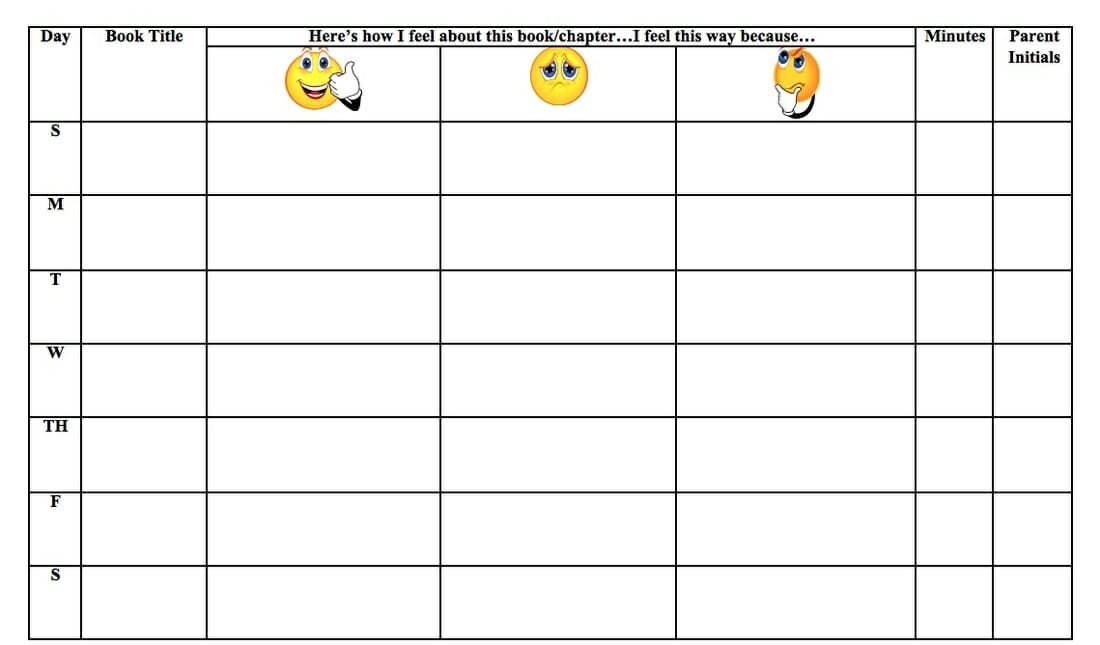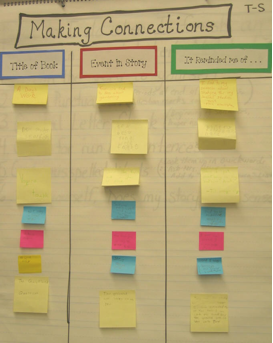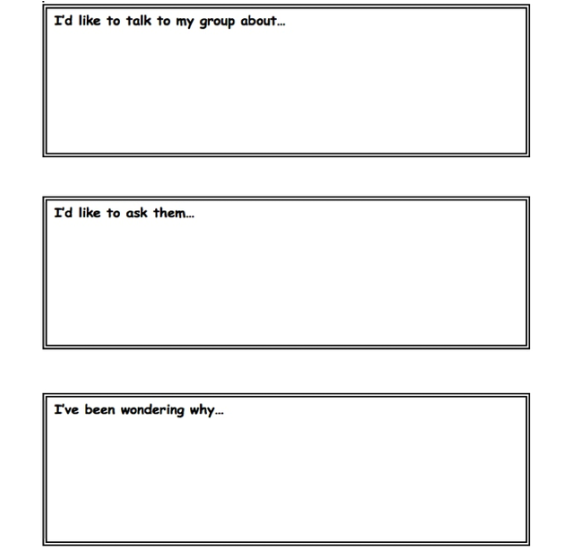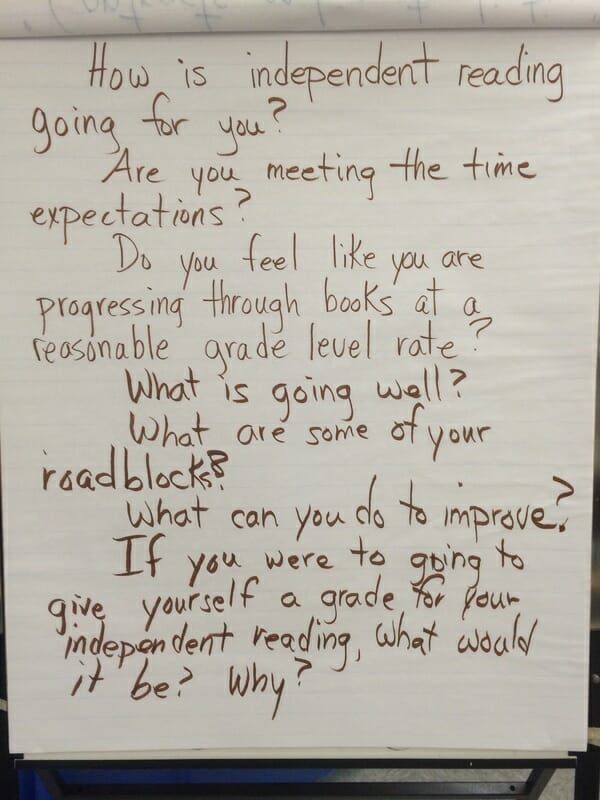If we believe reading is thinking, then we consider assessment in Readers’ Workshop a gauge of cognitive and metacognitive processes churning around text interaction. But how do we measure complex cerebral strategies and translate them into PowerSchool keystrokes, team meeting dialogue, or parent conference conversation? There are several ways to assess reading strategies and thinking skills in the context of RW (Readers’ Workshop) and still meet your report card deadline.
Using Assessment to Research, “What Does the Student Need to Learn Now?”
Formative assessment answers the question, “What does the student need to learn now?” This ongoing, daily research allows educators to monitor progress, investigate student needs, and decide what to teach. Formative assessment in RW is frequent, ongoing and incorporated into general daily classroom using the following tools, among others:
- Reading Logs
- Reader Response
- Reader’s Notebook
- Conferring
Researching with Student Reading Logs
Reading logs help students self-regulate reading behaviors, consider patterns in their reading decisions, and identify reading goals. The common core standards necessitate that students read a high volume of increasingly complex text in order to accumulate new language, construct deeper understandings, and employ developing comprehension strategies. What can educators research about student growth in these areas through Reading Logs?
- Reading volume
- Completion or abandonment patterns/intervals
- Genre patterns
- Text level trends
- Text formats (graphic novels, picture books, chapter books, etc.)
Pinterest and other sites offer creative teacher ideas for customizing reading logs to meet your assessment needs.

Researching with Reader Response
Using graphic organizers, “think sheets,” sentence-starters, and prompted questions help teachers gather data about readers as they analyze within or across texts and genres. Purposefully created reader response tools solicit targeted assessment data about reader comprehension. These tools can be pasted in Reader’s Notebooks, reflected during oral conversation in book clubs or conferences, written on “book recommendation slips,” distributed on photocopied “think sheets,” housed in reading folders, drawn by hand on student papers, reflected on sticky notes, or amassed on class anchor charts. This anchor chart helps the teacher quickly assess the class understanding a comprehension strategy.

This “think sheet,” developed by a former Wachusett Regional School District literacy coach, helps students map their thinking prior to a book club conference.

Reader response assessment strategies must be carefully modeled by teachers in order for them to yield data to drive instruction. Modeling should include the teacher thinking aloud during construction of his/her response, not just the exemplar of the completed writing. This anchor chart, developed by a Quabbin Regional Middle School teacher in Barre, MA, provides explicit models of sticky note response to text.

What can educators research about student growth through Reader Response?
- Aptitude for translating thinking into writing
- Level of comprehension (literal or inferential, strong or anemic, etc.)
- Evidence from text to support claims
- Points where reader gains or loses meaning (during or after reading, translating thoughts to paper, etc.)
- Depth of thinking (deep, superficial, concrete, metaphorical, etc.)
- Metacognitive awareness (Can they articulate use of strategies or skills when appropriate?)
- Skill discrepancies between open-ended and text-dependent question responses
The Wachusett Regional Schools website, among many others, offers a Reader Response Toolkit to peruse on their assessment page.
Researching with Reader’s Notebook
Using a Readers’ Notebook helps teachers collect data about student thinking over time in a way that is organized and easy to access. Readers’ Notebook records can take the form of diary entries, letters to the teacher, prompted response, sticky note compilation, scrapbook-style entries with “artifacts” reflecting the text, free form response, pictorial representation, diagrams, or graphic organizers.

Notebook entries can offer literal or skill-based data for the teacher, such as word lists or responses to sentence-starters such as, “I can tell the main character in the story is _____ because ______.”
{INSERT SLIDESHOW}
Alternatively, journal writing can reveal deep thinking, misconceptions, or reading challenges through “free writes” or probing prompts such as, “I’m worried about the character ____’s decision to ____ because I think____” or “I’m thinking that ____ because I notice that ____.” Finally, the Readers’ Notebook can help teachers unchain the secretive reading lives of their students and assess engagement, confidence, and self-perception. This anchor chart, crafted by a Williams Middle School teacher and her class in Longmeadow, MA, guides students in reflecting on their independent reading behaviors and growth.

What can educators research about student growth through Reader’s Notebooks?
- Development of comprehension strategies
- Depth of thinking
- Misconceptions about a text or strategy
- Pattern of challenges or obstacles
- Progression of capacity to convey meaning through writing
- Growth in inferential thinking
- Preferred modes for reflecting on text and new areas of reflection to explore
Researching with Conferring
Conferring is a powerful way to conduct assessment research during Readers’ Workshop. Conferences can enable data collection from reading logs, reader response, and Reader’s Notebooks, as well as observation of student reading, and conversation with students about a text. This all-encompassing approach allows the teacher to record detailed notes and probe beyond just one assessment tool if more information is desired. The conference can start with general questions such as, “What are you reading?” or “How is that going?” Increasingly complex questions and observations can help the teacher identify an area of need or unlock points of confusion with the reader. Best of all, the conference provides an opportunity to make a decision based on this research and explicitly model a skill or strategy for the student to try, first with guided practice and then independently after the conference. What can educators research about student growth through conferring?
- Real reading vs. “fake reading”
- Reasons for breakdown of meaning or successful cuing strategies to regain meaning
- Strategies/skills applied to tackle fluency, decoding, and/or comprehension
- Engagement
- Literal vs. inferential understanding
- Self-regulation and reflection
- Goal-setting
With so much data generated from each conference, you may wonder about innovative ways to track and use resulting information. This teacher has created a technological solution to data management during conferring.
There are many other ways to gather formative assessment data during Readers’ Workshop including checklists, running records, informal observation during guided practice, self-guided student reflection templates, digital recording of student readings or book talks, and student-directed goal-setting forms. Do you have powerful assessment tools you use to research, decide, and teach during Readers’ Workshop?






